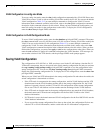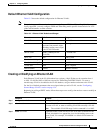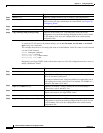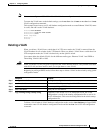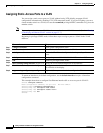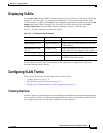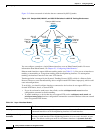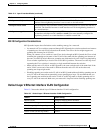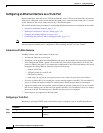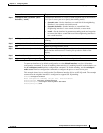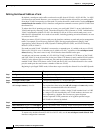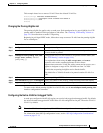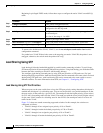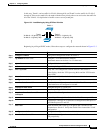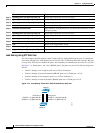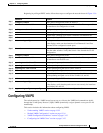
13-14
Catalyst 2940 Switch Software Configuration Guide
78-15507-02
Chapter 13 Configuring VLANs
Configuring VLAN Trunks
Configuring an Ethernet Interface as a Trunk Port
Because trunk ports send and receive VTP advertisements, to use VTP you must ensure that at least one
trunk port is configured on the switch and that this trunk port is connected to the trunk port of a second
switch. Otherwise, the switch cannot receive any VTP advertisements.
This section includes these procedures for configuring an Ethernet interface as a trunk port on the switch:
• Interaction with Other Features, page 13-14
• Defining the Allowed VLANs on a Trunk, page 13-16
• Changing the Pruning-Eligible List, page 13-17
• Configuring the Native VLAN for Untagged Traffic, page 13-17
Note The default mode for Layer 2 interfaces is switchport mode dynamic desirable. If the neighboring
interface supports trunking and is configured to allow trunking, the link is a Layer 2 trunk.
Interaction with Other Features
Trunking interacts with other features in these ways:
• A trunk port cannot be a secure port.
• Trunk ports can be grouped into EtherChannel port groups, but all trunks in the group must have the
same configuration. When a group is first created, all ports follow the parameters set for the first
port to be added to the group. If you change the configuration of one of these parameters, the switch
propagates the setting that you entered to all ports in the group:
–
allowed-VLAN list
–
STP port priority for each VLAN
–
STP Port Fast setting
–
trunk status (If one port in a port group ceases to be a trunk, all ports cease to be trunks.)
• If you try to enable 802.1X on a trunk port, an error message appears, and 802.1X is not enabled. If
you try to change the mode of an 802.1X-enabled port to trunk, the port mode is not changed.
• A port in dynamic mode can negotiate with its neighbor to become a trunk port. If you try to enable
802.1X on a dynamic port, an error message appears, and 802.1X is not enabled. If you try to change
the mode of an 802.1X-enabled port to dynamic, the port mode is not changed.
• Protected ports are supported on 802.1Q trunks.
Configuring a Trunk Port
Beginning in privileged EXEC mode, follow these steps to configure a port as an 802.1Q trunk port:
Command Purpose
Step 1
configure terminal Enter global configuration mode.
Step 2
interface interface-id Enter the interface configuration mode and the port to be configured for
trunking.



